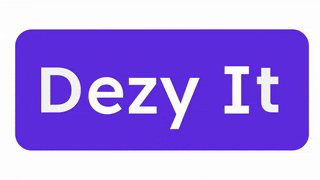Boost Retention and revenue 10X: Mastering product-led growth design for enduring SaaS growth.
- alekhya1
- Feb 28, 2024
- 4 min read

Hello, SaaS pioneers! We stand at the precipice of a thrilling adventure – a quest to unlock 10x growth for our businesses. But this isn't about brute force marketing tactics; we're about to delve into the subtle art of product-led growth. We'll craft an irresistible user experience (UX) that turns casual visitors into loyal, revenue-generating customers.
Why Product-Led growth?
Forget the traditional marketing playbook. We're shifting the paradigm by placing your product at the center of the stage. This isn't about shoving intrusive ads down users' throats. Instead, we're crafting an intuitive and value-driven experience that users genuinely enjoy exploring. This approach fosters organic engagement, transforming customers into passionate brand advocates.
But how does this translate into actual results? Buckle up, because we're about to embark on a journey through the key strategies that power product-led growth.
1. The Onboarding Odyssey: First Impressions Matter
Imagine this: A user signs up for your product, eager to discover its potential. But they're met with a confusing interface and a lack of clear direction. They become frustrated, lose interest, and poof! They're gone. Avoid this tragedy by designing an exceptional onboarding experience.
Think of it as a guided user journey:
Welcome them warmly: Introduce them to the product's value proposition with a clear and concise message.
Map the path forward: Provide a step-by-step walkthrough of core functionalities, highlighting the immediate benefits they stand to gain.
Spark those "aha!" moments: Design interactive elements or "win states" that showcase the product's power and leave users wanting more.
2. The Freemium Force: A Strategic Growth Lever
Not everyone is ready to dive headfirst into a paid subscription. That's where the freemium model comes in. Offer a strategic selection of features at no cost, allowing users to experience the core value your product offers. This low-risk, high-reward strategy serves two crucial purposes:
Product adoption: By letting users dive in, you lower the barriers to entry, encouraging them to explore and understand your product's capabilities.
Premium positioning: The freemium model acts as a springboard for your premium features. Users who discover the value of the free tier will naturally see the premium features as a natural progression for enhanced functionality and convenience.
Remember, the freemium model is a strategic dance. Offer enough value to keep users engaged, but reserve the truly transformative features for your premium subscribers.
3. The Data-Driven Symphony: Personalization for Deeper Connections
Data is a valuable asset, but only when you leverage it intelligently. Don't just collect data – use it to personalize the user experience. Here's how:
Tailor recommendations: Based on user behavior and preferences, recommend relevant features, content, and upgrades, demonstrating your understanding of their unique needs.
Deliver contextual support: Offer targeted support options based on user activity, guiding them through difficulties and ensuring a smooth user journey.
Personalize communication: Craft personalized communication based on user data, making them feel valued and fostering a stronger connection with your brand.
By personalizing the experience, you demonstrate that you care about your users and their individual needs. This fosters deeper connections and drives customer loyalty.
4. The Community Constellation: Building a Loyal User Base
Communities are the lifeblood of any successful product-led growth strategy. Here's how to cultivate a thriving community around your product:
Investing in community building fosters brand loyalty, increases user engagement, and provides valuable insights for product improvement. By fostering a thriving community, you create a space where users can connect, learn, and contribute to the product's evolution.
5. The Measurement Maestro: Tracking Progress and Optimizing
The journey to product-led growth success is an ongoing process of experimentation, analysis, and improvement. You need to track key metrics to understand the effectiveness of your strategies and identify areas for optimization. Some crucial metrics to monitor include:
User acquisition cost (CAC): Understand how much it costs to acquire a new user.
Customer lifetime value (CLTV): Measure the total revenue a customer generates over their relationship with your product.
Churn rate: Track the percentage of users who stop using your product over a given period. This metric helps you identify potential issues and areas for improvement in the user experience.
Net Promoter Score (NPS): Measure customer loyalty and satisfaction. A high NPS score indicates that your users are likely to recommend your product to others.
By continuously monitoring and analyzing these metrics, you can gain valuable insights into user behavior, identify areas for improvement, and refine your PLG strategies for optimal results. Remember, data is your guide in the PLG journey.
6. Conclusion: The Power of Product-Led Growth
In summary, mastering product-led growth design isn't just about implementing tactics; Product-led growth is a powerful and sustainable approach to achieving long-term success in the SaaS industry. It's about adopting a holistic approach that places the user experience front and center. By integrating these principles into our SaaS business, we create an environment where users not only find value in our product but become fervent advocates for our brand. This journey isn't just about growth; it's about crafting meaningful experiences that resonate with users and propel our business to new heights. So let's embark on this adventure together, fueled by curiosity, driven by innovation, and guided by the unwavering pursuit of excellence.
Are you frustrated with stagnant SaaS growth? Stop wondering and start experiencing the product-led growth revolution!
Start your FREE trial today!


Comments